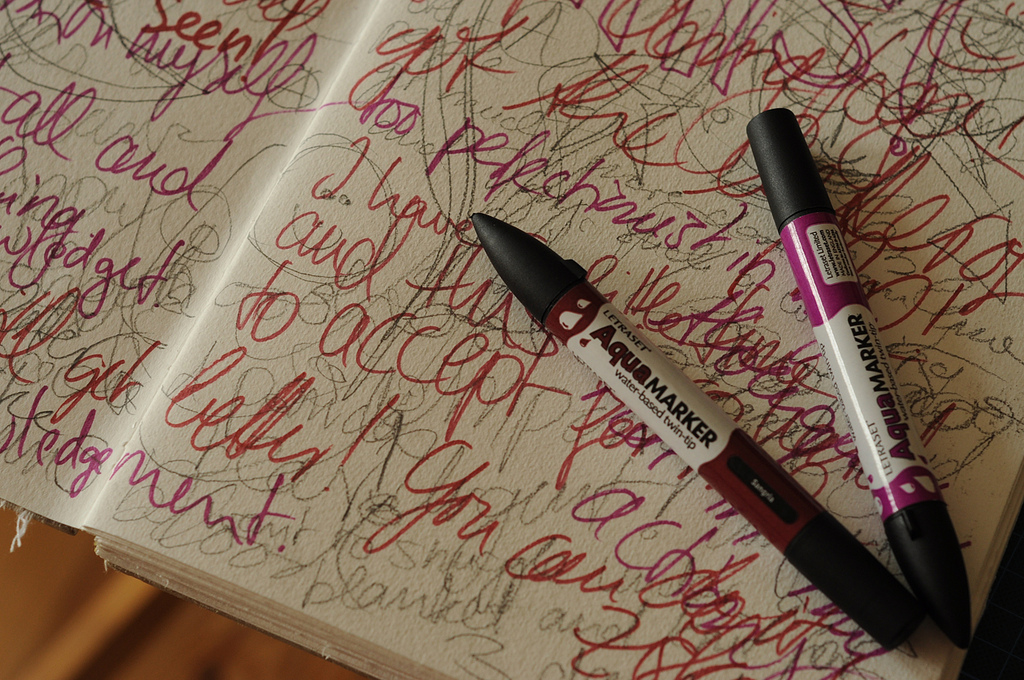Think I’m kidding? I’m not.
Years ago, I learned an important tool known as “timed writing.”
While Kelly Morgan didn’t invent it, she’s the one who taught it to me, and I’m forever grateful. If you aren’t familiar with the method, it involves you, a writing instrument, and a timer. Willingness helps, but it’s not absolutely necessary. Depending on my preference at the time, I’ve used my computer, or put pen to paper.
Commit to keeping your pen (or fingers on the keys) moving for the alloted time. No ifs, ands, or buts.
Don’t have anything to say?
Then write, “I don’t have anything to say” over and over again.
Think this is stupid?
You guessed it—write, “this is stupid” as many times as is necessary.
Just. Write.
While it’s possible that you’ll end up with a few pages filled only with “I hate this, blah blah…” I can tell you from experience it’s pretty unlikely. In fact, in the years I’ve been using this technique, it’s never been a complete disappointment, and often yields fabulous results.
This is very much a “first thought, best thought” discipline. There’s no filter, and you aren’t writing to get something “good.” (Although, don’t be surprised if you tap a hidden vein of gold.) Lately, I’ve been using 20 minute chunks. This jibes with the pomodoro technique, and I’ve had success with it. Your mileage may vary, so feel free to experiment.
Today, I worked with it in a slightly different way. I’m currently working on Tether, Book 3 in The Gateway Trilogy, and I’m feeling behind because of some health stuff. But I’m committed to my deadline, so although I’ve got some resistance going, I decided to shake things up and see if I could get some results.
So far, it’s exceeded my expectations. I woke up and did my morning routine of taking my dog out, making coffee, and meditating in my garden. Then, I went old school with a spiral-bound notebook and the timer on my iPhone. Side note: I prefer gel pens for the ease with which they glide across the paper. I find that genuinely makes a difference.
What I didn’t do, is wait until I felt like writing—who knows when that might be? I’ve got stitches in my mouth and feel queasy from antibiotics.
Instead, I started off with, “I don’t know what to write. Where do I pick up the story?” Then I started writing down a few things that weren’t working, things I needed to fix but wasn’t sure how. At some point during the exercise, things shifted and I no longer resented doing it.
After my first session, I played with my pup and danced to two songs. After the second break, I emptied my dishwasher and ate a snack while listening to Howard Stern. And after the third session, I was inspired to begin this blog post. After the fourth, I made a phone call and after the fifth I was done!
If you’re just beginning to make writing a part of your daily practice, five sessions would be overwhelming—I’d suggest starting with one. And if 20 minutes is intimidating, go with 10. When first starting any habit, it’s consistency that matters most. Experiment and see what works for you.
I find that I get insights, that prior to writing, I was unable to access. Sometimes that carries me through the 20 minutes, but more often, I go back to writing, “this sucks” until I hit another vein, or until the timer dings. I remind myself as I go, that this is meant to be fun, and that I’m just exploring—nothing has to be “good.”
Truth be told, there will be a time when this won’t be nearly enough time for me to put in and still meet my looming deadline. But for now, while some of the story is still formless, I need a more fluid approach in order to bring it into being. Once things are a bit clearer, I’ll go back to my 2500 words a day goal. (I only count actual words written IN the story, not just about the story.)
I’ve used timed writing to help unravel plot points, brainstorm blog posts, compose said blog posts, and do a “brain drain” so that I can empty my mind of chatter.
How about you? Have you tried this technique? What were your results?
image via distelfliege
